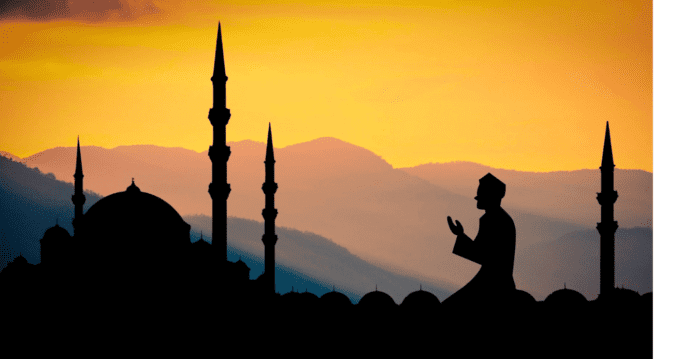The Islamic calendar is rich with significant holy days and periods that hold deep religious and cultural meaning for Muslims around the world. Understanding these days offers insight into the practices and beliefs that shape the lives of millions. This post explores the main Islamic holy days, festivals, and rituals, providing a comprehensive guide to their significance and the ways they are observed.
The Islamic Calendar
The Islamic calendar, or Hijri calendar, is a lunar calendar consisting of 12 months. Each month can be either 29 or 30 days long, making the total year about 354 or 355 days. This cyclical nature of the calendar means that Islamic holy days shift about 10 to 12 days earlier each year in the Gregorian calendar. Key months in the Islamic calendar include:
- Muharram: The first month, marking the beginning of the year.
- Ramadan: The ninth month, a period of fasting and prayer.
- Shawwal: The month following Ramadan, which begins with Eid al-Fitr.
Major Islamic Holy Days
1. Eid al-Fitr
Eid al-Fitr, also known as the “Festival of Breaking the Fast,” is celebrated at the end of Ramadan. This joyous occasion marks the conclusion of a month of fasting and prayer. On this day, Muslims gather for special prayers at mosques or community centers, followed by communal meals and festivities.
Key Features:
- Charity (Zakat al-Fitr): Before the Eid prayer, Muslims are required to give a specific form of charity to the needy, ensuring that everyone can partake in the celebrations.
- Feasting and Celebration: Families come together to share meals, exchange gifts, and enjoy festive activities.
For more information on Eid al-Fitr, visit this detailed guide on the celebration.
2. Eid al-Adha
Eid al-Adha, or the “Festival of Sacrifice,” occurs approximately 70 days after Eid al-Fitr and coincides with the Hajj pilgrimage. It commemorates the willingness of Prophet Ibrahim (Abraham) to sacrifice his son as an act of obedience to God. Instead, God provided a ram to sacrifice.
Key Features:
- Animal Sacrifice: Families often sacrifice an animal (usually a sheep, goat, or cow) and distribute the meat among family, friends, and those in need.
- Community and Family Gatherings: The day is marked by prayers, feasting, and community gatherings.
For a deeper understanding of Eid al-Adha traditions, explore this resource.
3. Ramadan
Ramadan is the ninth month of the Islamic calendar and is considered the holiest month for Muslims. It is a time for spiritual reflection, increased devotion, and worship. Fasting during Ramadan is one of the Five Pillars of Islam.
Key Features:
- Fasting (Sawm): Muslims abstain from food, drink, smoking, and marital relations from dawn until sunset. This fast is seen as a way to develop self-discipline, empathy for the less fortunate, and spiritual growth.
- Nightly Prayers (Tarawih): Special prayers are held each night of Ramadan, where long portions of the Quran are recited.
To learn more about the significance of Ramadan, visit this informative article.
4. The Night of Decree (Laylat al-Qadr)
Laylat al-Qadr, also known as the Night of Decree, falls within the last ten days of Ramadan. It is believed to be the night when the Quran was first revealed to Prophet Muhammad.
Key Features:
- Special Prayers and Supplications: Muslims engage in extra prayers, read the Quran, and seek forgiveness during this night, which is described as better than a thousand months.
- Reflection and Worship: Many spend the night in worship, seeking God’s mercy and blessings.
5. Islamic New Year (Hijri New Year)
The Islamic New Year marks the beginning of Muharram, the first month of the Islamic calendar. While it is not celebrated with grand festivities like the Gregorian New Year, it holds significance for reflection and remembrance.
Key Features:
- Commemoration of Historical Events: Muslims may reflect on the Hijra (the migration of Prophet Muhammad from Mecca to Medina) during this time.
- Spiritual Reflection: Many use this occasion to renew their commitment to faith and seek personal growth.
For insights into the Islamic New Year, check out this comprehensive guide.
Other Notable Days and Periods
- Ashura: The 10th day of Muharram, commemorating various significant events, including the martyrdom of Imam Hussain, the grandson of Prophet Muhammad. It is observed with fasting and reflection.
- Mawlid al-Nabi: The observance of the birthday of the Prophet Muhammad, celebrated with gatherings, prayers, and readings of his life story.
Conclusion
Islamic holy days and periods are not just dates on a calendar; they represent a profound connection to faith, community, and tradition. Understanding these observances helps foster respect and appreciation for the diverse practices within the Islamic world.
Whether through communal prayers, charitable giving, or spiritual reflection, these celebrations serve as a reminder of the core values of Islam: compassion, community, and faith.
For more insights into Islamic culture and practices, visit Worldwide Highlights for our latest articles and resources Islamic Holy Days and Periods.




